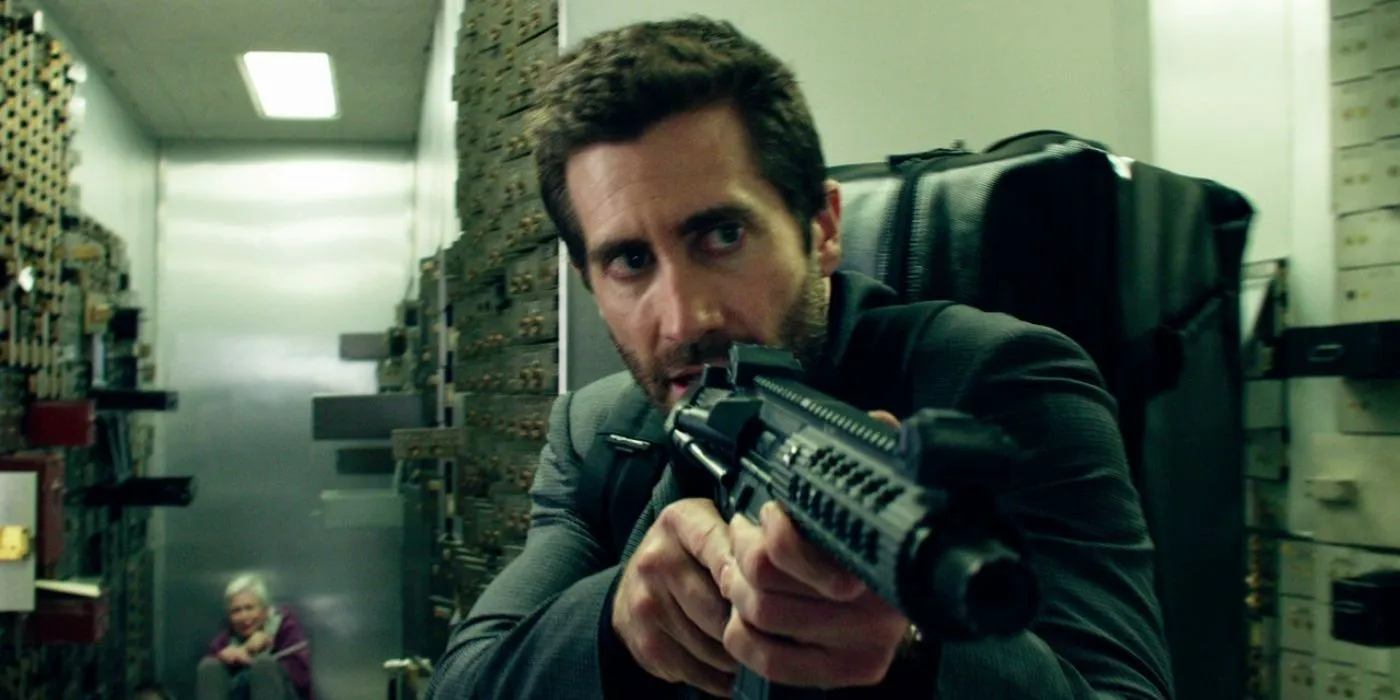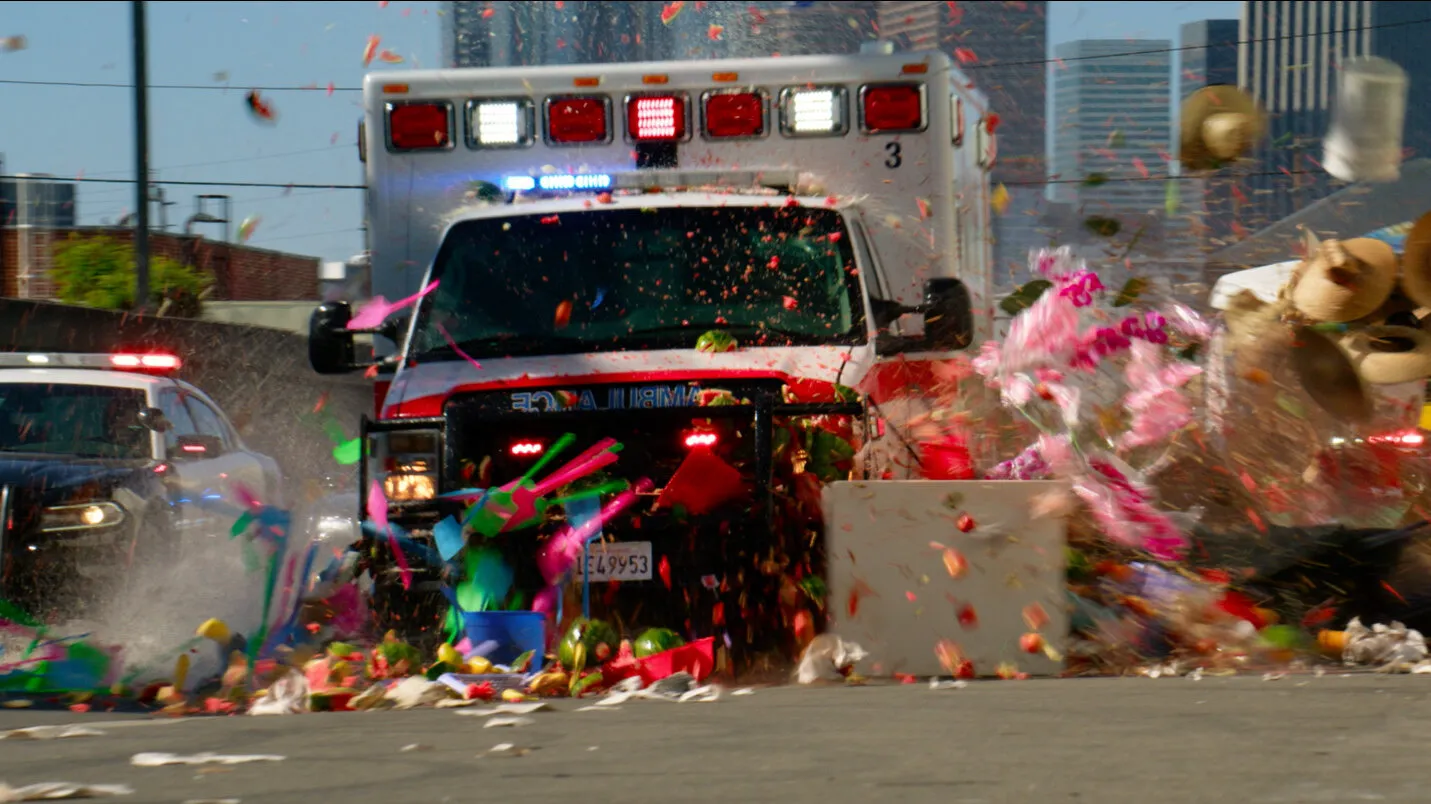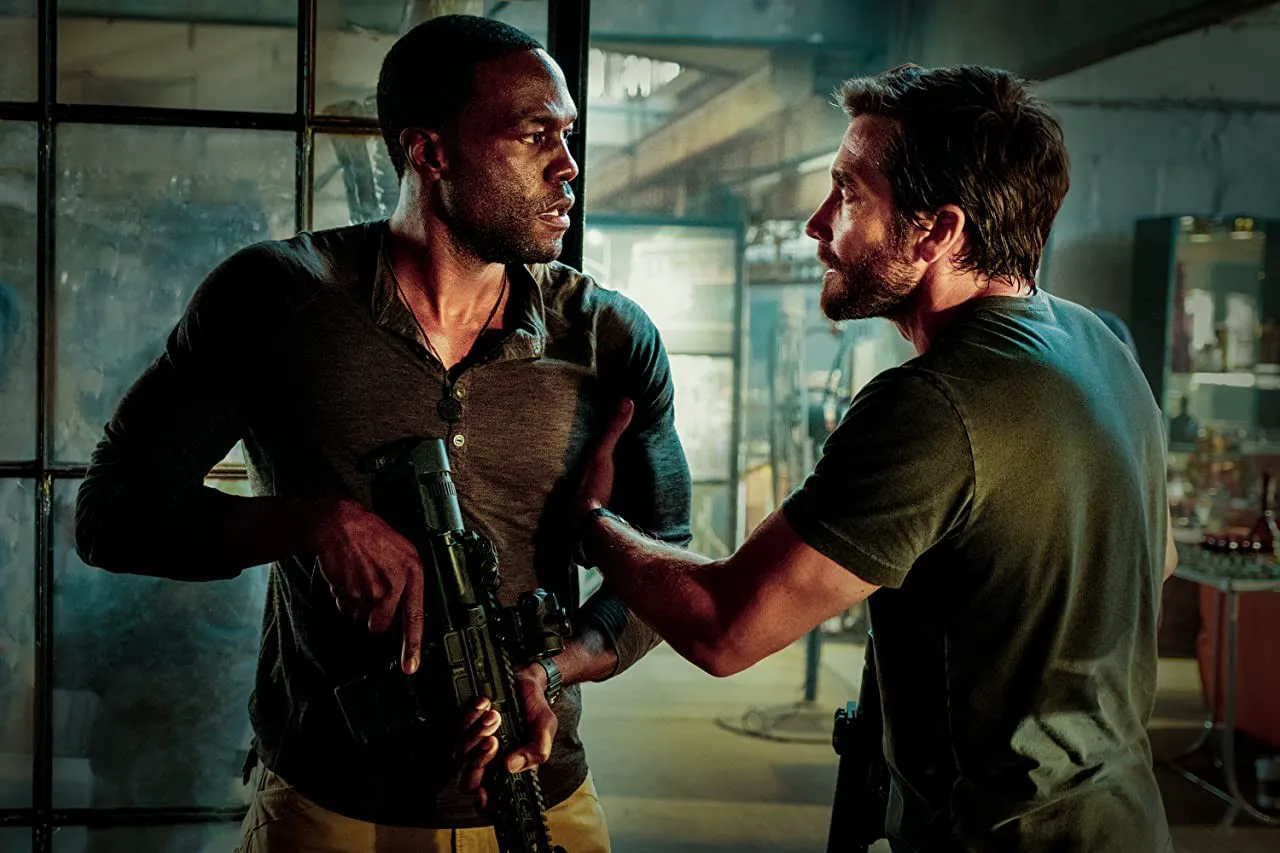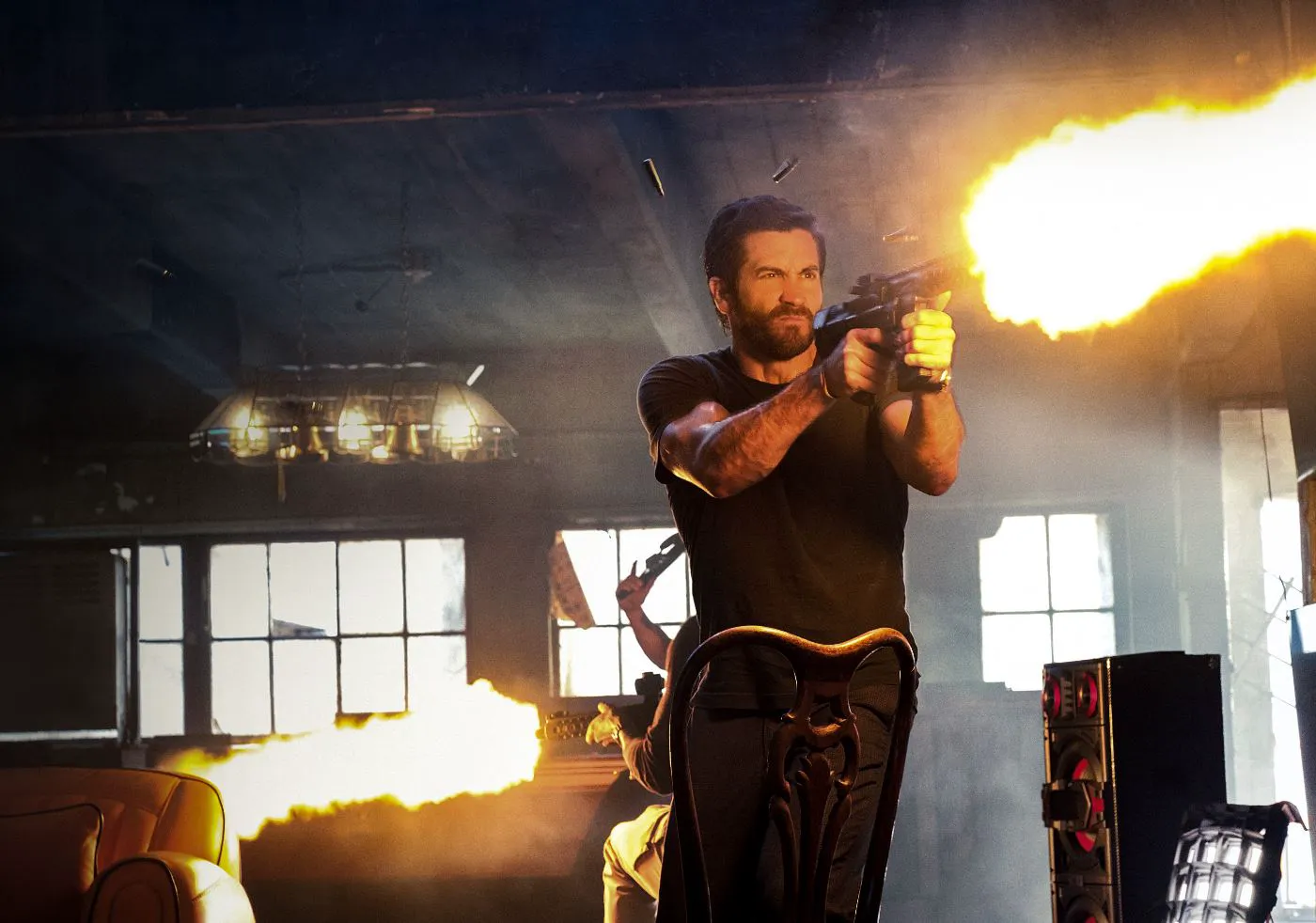Ambulance: A High-Octane Thrill Ride Through the Streets of LA
In the crisp morning air of Los Angeles, Will Sharp (Yahya Abdul-Mateen II), a decorated veteran, finds himself driven to desperation. He turns to his adoptive brother, Danny (Jake Gyllenhaal), a charismatic and reckless career criminal, for help. With his wife facing a life-threatening illness and mounting medical bills, Will agrees to participate in a bank heist orchestrated by Danny. However, the meticulously planned operation quickly spirals into chaos.

Jake Gyllenhaal as Danny
Instead of a clean getaway, the brothers find themselves with a hostage: a wounded police officer (Jackson White). They commandeer an ambulance with a dedicated paramedic, Cam Thompson (Eiza González), on board. Now, fugitives on the run, Will and Danny must navigate the treacherous streets of Los Angeles, evading relentless police forces and SWAT teams while struggling to keep their hostage alive.
Michael Bay’s Explosive Return to Form
Michael Bay, the pyrotechnic maestro behind the “Transformers” saga, proves he hasn’t lost his touch for delivering high-octane action. In “Ambulance,” he elevates the action genre into a relentless barrage of visual spectacle. Forget subtlety; Bay’s signature style – frenetic camera work, screeching metal, and a symphony of gunfire – fuels this adrenaline-pumping thrill ride.
“Ambulance” feels like a throwback to the gritty action films of the 90s, transforming Los Angeles into a war zone. It evokes the spirit of Bay’s earlier hits like “The Rock” and “Bad Boys,” while borrowing elements from Michael Mann’s “Heat” and Jan de Bont’s “Speed.” The bank robbery itself, reminiscent of “Heat,” is presented through Bay’s hyperkinetic lens, with rapid-fire editing, dizzying drone shots, and a relentless pace driven by the actors’ unhinged performances. Jake Gyllenhaal, in particular, embodies a volatile criminal on the verge of losing control. The “Speed” influence is evident in the non-stop chase sequences, forcing the characters to confront impossible challenges: performing surgery on a police officer at 60 mph, patching up a ruptured spleen, and using brute force as anesthesia. Bay’s signature dark humor, previously showcased in “Pain & Gain,” adds a welcome layer of levity to the chaos.

High-Speed Mayhem
Style Over Substance?
Bay’s cinematic vision prioritizes energy and relentless momentum. Plot becomes secondary, and characters serve as functional components within the action-driven narrative. Consequently, the characters in “Ambulance” feel underdeveloped. It’s difficult to fully sympathize with Will, the veteran driven to crime by desperation, or Danny, the charismatic but reckless criminal. Eiza González’s paramedic fares slightly better, but she remains a pawn in the unfolding chaos.
Bay’s focus lies not on character depth but on the raw power of vehicular mayhem and explosive gunfights. Character motivations are often flimsy, and the tragic outcome of the heist is easily predictable. The characters are propelled forward by the film’s relentless energy, existing in a world fueled by testosterone and gasoline, where energy is constantly converted into cinematic motion.

Gyllenhaal’s Unhinged Performance
A Retro Throwback with Modern Flair
Bay’s filmmaking sensibilities are undeniably old-fashioned, emphasizing explosive set pieces, glossy visuals, and the destruction of property. This retro approach extends to the plot itself, which feels almost anachronistic in the modern crime genre. As one character quips, “Who even robs banks anymore?” This line serves as an ironic commentary on both the action movie genre and the realities of modern crime, where bank robberies are increasingly rare and difficult to pull off. Only a desperate individual with nothing to lose would resort to such measures. However, in Bay’s world, this desperation is amplified into a spectacle of audacity and adrenaline-fueled mayhem, reminiscent of action films from three decades ago.

Bay’s Signature Style
To execute his vision, Bay employs a vast arsenal of cinematic tools: drones that weave through city streets, 360-degree camera rotations, relentless handheld camerawork, and a vibrant color palette. Helicopters chase the ambulance through the canals of Los Angeles, police cars flip spectacularly, and characters scream and cry, adding a touch of melodrama to the climax (albeit a perfunctory one, as is typical of Bay). The director tempers the absurdity with humor, making it clear that “Ambulance” is fully aware of its own ridiculousness.
A Guilty Pleasure Worth Indulging
Ultimately, “Ambulance” is a pure, unadulterated guilty pleasure. It’s a rollercoaster ride that will jolt your senses back to life. Bay’s signature style remains as potent as ever, reminding us of the sheer joy of cinematic spectacle. With “Ambulance,” Bay has essentially created a live-action version of Grand Theft Auto, complete with a dozen wrecked cars and a fleet of drones soaring through the sky.